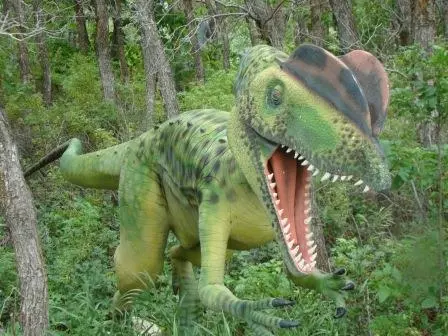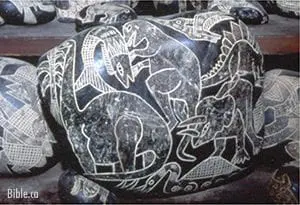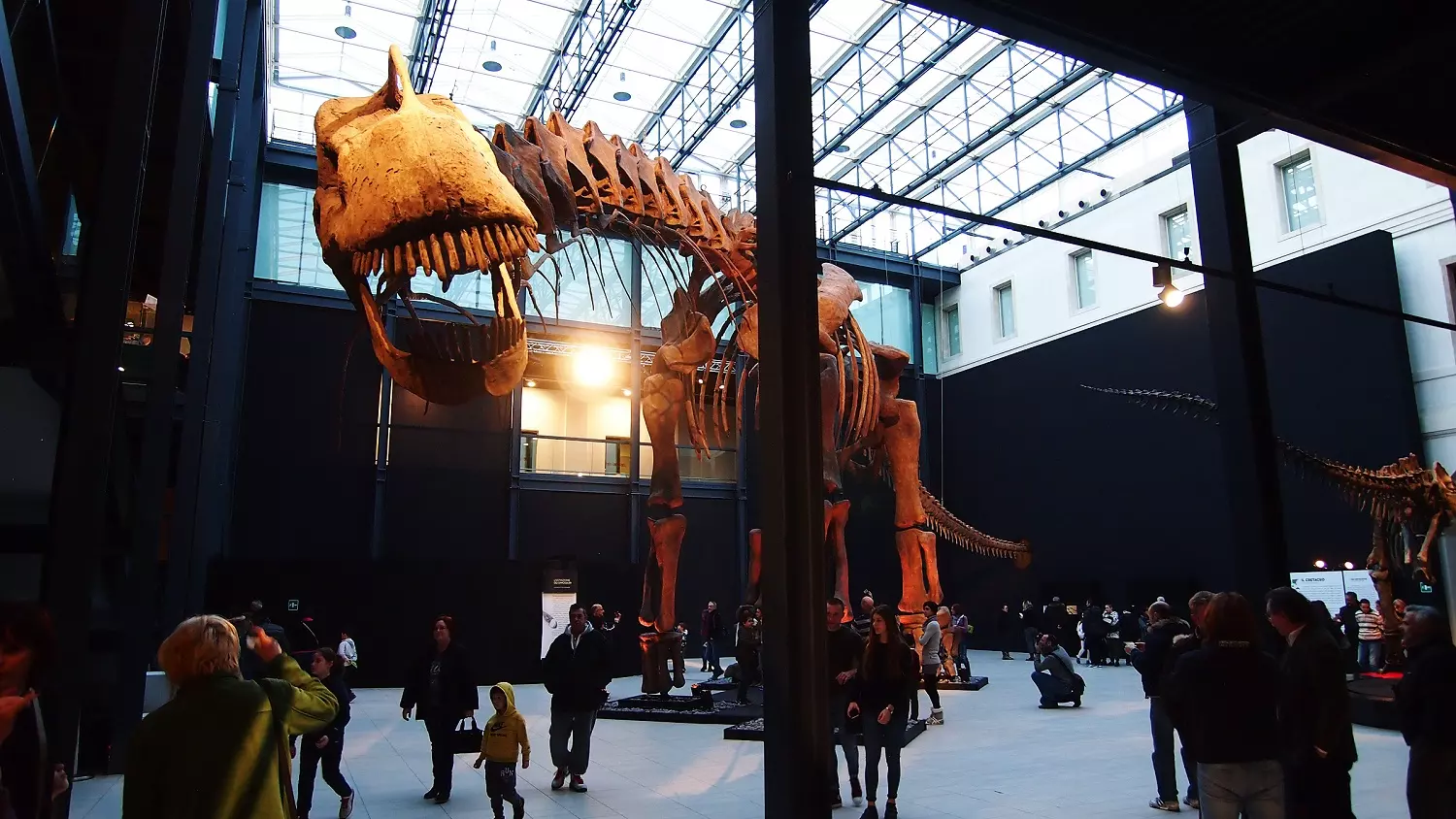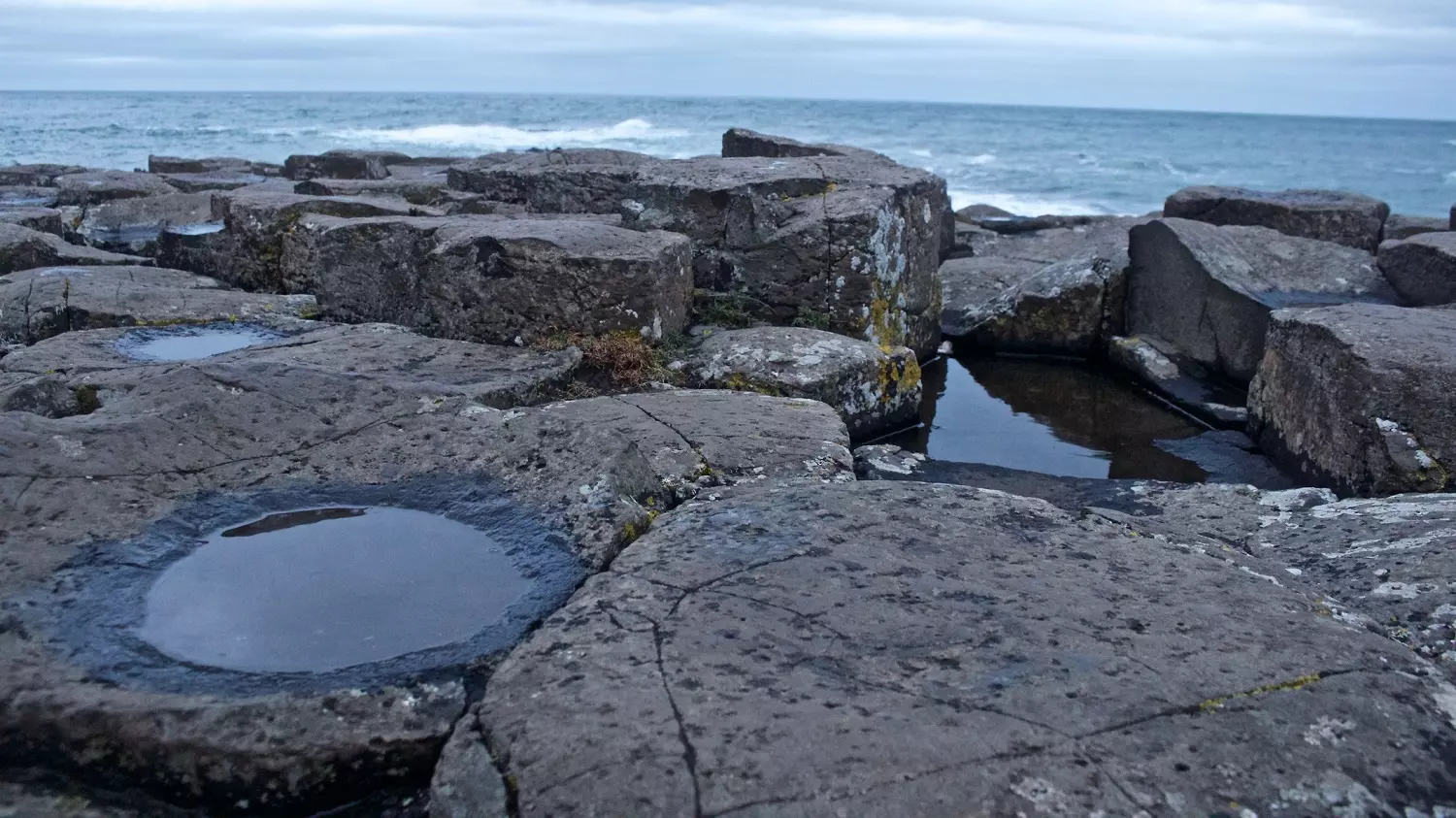Fossil remains of up to around 1000 different types of dinosaurs have been discovered. Each new discovery heightens the interest in these incredible creatures, and seems to raise more questions than are answered. What were dinosaurs like? How do they fit in with the Bible?
Dinosaurs ranged from the 110-ton Argentinosaurus (top image) to the tiny lizard-like Lagosuchus. But most were in between. One of the most well-known was Tyrannosaurus rex.
The first of about fifty T. rex fossils discovered was in Wyoming in 1900, although no complete skeletons have been found. The debate continues as to whether T. rex was a true predator or just a scavenger. Portrayed as a fast-running predator in Jurassic Park, T. rex actually lived during the Cretaceous Period according to the evolutionary timescale.
What happened to the dinosaurs?

The most popular theory as to what killed off the dinosaurs is that the earth was struck by a meteor or asteroid 65 million years ago. One of the problems with this and most other theories is why it didn’t kill off the other animals as well. However, the fossil record does indicate that a worldwide cataclysm did occur. But mass graveyards of creatures in sedimentary rock all over the earth point toward rapid burial by water.
How do they arrive at a date of 65 million years ago?
There are a number of assumptions that go into dating of the fossil record. The basic underlying assumption is uniformitarianism. This assumption was popularized by Charles Lyell in the 1830s with the slogan “The present is the key to the past.” This is the assertion that geological processes have always proceeded at the same slow, gradual rates as they do today, and eliminates any possibility of a biblical flood.
Is there any evidence that dinosaurs lived beyond “65 million years ago”?
Skeptics dismiss references to monsters in ancient history as myth. But stories of scaly reptilians are remarkably consistent from cultures all over the world. Here are some examples of these strange creatures as portrayed by early historians and naturalists:
- Greek historian Herotodus, in 440 BC visited a site in Arabia famous for “winged serpents.”
- Greek philosopher Apollonius of Tyana states that “dragons of enormous size,” reaching lengths of 45 feet inhabited the swamps and mountains of India. They had scales, crests on their heads, and serrated backs, and gave off a terrible hiss.
- British chronicles mention encounters with reptilian monsters in nearly 200 locations throughout the British Isles. One of the best descriptions comes from Suffolk, England in 1405. It describes an animal similar to the ones recorded by Apollonius, which had menaced the people of the countryside. It goes on to say how they gathered together with bows and arrows and chased the monster into a marshland.
- An account from Italy in 1572 describes how a herdsman killed a small “dragon” near the town of Bologna. Naturalist Ulysses Aldrovandus describes it as a reptile.
- Even as late as the early 1900s comes a story from Wales concerning “winged serpents” that were quite common. Being a menace to their livestock, the local farmers killed them off.
Other evidences that ancient peoples witnessed large reptiles include rock art found in various locations of the Southwest US. Images resembling sauropod and theropod dinosaurs are found in remote areas along with drawings of animals with which we’re familiar today.
Dinosaur Artifacts
A number of cultures have left us with images on artifacts of past encounters with what were apparently dinosaurs. Although dismissed as fraudulent by evolutionists since they “know” that dinosaurs disappeared long before man evolved, the images reveal details of these animals that have been discovered by paleontologists only in the last 150 years or so.

Here are a few examples:
- Over 33,000 ceramic figurines have been discovered at Acambaro, Mexico, left by the Chupicuaro culture from 800 BC through 200 AD. Among these are figures of dinosaurs that closely resemble the Stegosaurus and Saltasaurus.
- Thousands of burial stones, many with strange creatures carved on them have been discovered in the area around Ica, Peru. Many show human contact with dinosaurs, including a Triceratops and a sauropod dinosaur.
- The Nile Mosaic of Palestrina shows Ethiopian hunters about to attack some sort of aquatic reptile resembling a Mussaur or other crocodile-like reptile.
Some Unusual Dinosaur Fossils
Could dinosaur tissue survive 65 million years? Recent discoveries have left evolutionists trying to figure out how fresh-appearing tissue could survive that long. The most widely publicized find was the discovery of red blood cells and elastic tissue inside the femur of a T. rex in Montana in 2005. Since then other such finds have been announced, including the discovery of a sample of actual hadrosaur skin in 2012.
Instead of wondering how organic matter could remain intact for millions of years perhaps we should be asking if the tissue is really that old!
In museums and textbooks there is a sharp dividing line between the age of reptiles and the age of mammals. But many fossil beds contain both mammal and dinosaur bones, usually jumbled up together. A striking example of mammals and dinosaurs co-existing is a baby Psittacosaurus found inside an extinct mammal, discovered in China in 2005.
Another remarkable recent find was Dracorex hogwartsia, a dinosaur skull covered with bony spikes. Paleontologists think it may have been a young Pachycephalosaurus, so they mated it with a skeleton of that type. The striking thing about it is how much it resembles the dragons of legend. Could this be one of the sources of dragon stories?
Strange Animals of the Bible
There are many references to unknown animals in the Old Testament. The two most prominent ones are found in Job 40 and 41.
In chapter 40, Behemoth is described as having tail like a cedar and bones like bars of iron. Modern translations usually render this as a hippopotamus, but hippos don’t have tails like cedars. Could this be referring to a Diplodocus or Brachiosaurus?
Chapter 41 describes a huge crocodile-like monster that breathed fire. But this was no ordinary crocodile. Fossil evidence suggests that it was “SuperCroc,” which was a 40-foot monster, weighing an estimated 20,000 pounds, with a 6-foot long jaw. On its snout was a hollow chamber whose purpose is unknown. Could it have been a chemical reaction chamber that produced flaming gases?
Compelling Evidence
We have shown only a few examples that indicate that humans have actually seen living dinosaurs.
For further study see:
See the amazing photos in the Untold Secrets books by Vance Nelson.
The following websites have information on historical sightings of dinosaurs.








I like the clear presentation and logical arrangement of this article. However, if you’ll forgive me for nitpicking, Lagosuchus is actually not considered a dinosaur; it is a dinosauromorph, a group including dinosaurs along with a few other, typically small, reptiles. Non-dinosaurian dinosauromorphs like Lagosuchus differ from dinosaurs in specific features of the pelvis and ankles. The division is, like all taxonomic divisions, largely arbitrary, but I see no reason to dispute it.
Compsognathus is at least close to the smallest dinosaur (disregarding those that are actually birds), and it is quite well-known, so it would probably make a good example of a small dinosaur.
I look forward to seeing more of your articles in the future!
Caleb.